
"The Little Match Girl" is a literary fairy tale by Danish poet and author Hans Christian Andersen. The story, about a dying child's dreams and hope, was first published in 1845. It has been adapted to various media, including animated, live-action, and VR films as well as television musicals and opera.

The Kiss in the Tunnel, also known as A Kiss in the Tunnel, is a 1899 film British short silent comedy film, produced and directed by George Albert Smith, showing a couple sharing a brief kiss as their train passes through a tunnel, which is said to mark the beginnings of narrative editing. The film is the first to feature Laura Bayley, Smith's wife.

Fire! is a 1901 British short silent drama film, directed by James Williamson, showing the occupants of a house in Hove being rescued by the local fire service.
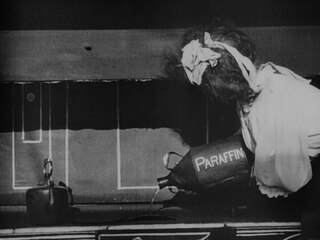
Mary Jane's Mishap; or, Don't Fool with the Paraffin is a 1903 British silent comic trick film, directed by George Albert Smith, depicting disaster following when housemaid Mary Jane uses paraffin to light the kitchen stove.
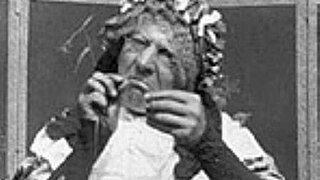
Grandma Threading her Needle is a 1900 British short silent comedy film, directed by George Albert Smith, featuring a grandma trying to get a thread though a needle. The sole purpose of the single-shot film, like the director's earlier Old Man Drinking a Glass of Beer (1898), according to Michael Brooke of BFI Screenonline, "is to record changing facial expressions for the purposes of entertainment."

Santa Claus is an 1898 British silent trick film directed by George Albert Smith, which features Santa Claus visiting a house on Christmas Eve. The film, according to Michael Brooke of BFI Screenonline, "is believed to be the cinema's earliest known example of parallel action and, when coupled with double-exposure techniques that Smith had already demonstrated in the same year's The Mesmerist (1898) and Photographing a Ghost (1898), the result is one of the most visually and conceptually sophisticated British films made up to then." It has been described as the very first Christmas movie and a technical marvel of its time.

The Old Maid's Valentine is a 1900 British short silent comedy film, directed by George Albert Smith, which features the titular Miss Pimple receiving an unpleasant surprise on 14 February. The film, according to Michael Brooke of BFI Screenonline, "is essentially a facial - a medium close-up shot of a single performer whose changing expression constitutes virtually all the film's dramatic action." David Fisher points out that, "the flapping of the sheet of paper and the movement of the calendar betray the open-air set," which, "makes it difficult to read the message: Just like Mama," whilst, "the remarkably well-behaved cat," which, "sits patently licking its paws," "suggests that Smith may have already learned the trick of smearing the cat's fur with food."

The X-Rays is an 1897 British silent comic trick film directed by George Albert Smith, featuring a courting couple exposed to X-rays. The trick film, according to Michael Brooke of BFI Screenonline, "contains one of the first British examples of special effects created by means of jump cuts" Smith employs the jump-cut twice; first to transform his courting couple via "X rays," dramatized by means of the actors donning black bodysuits decorated with skeletons and with the woman holding only the metal support work of her umbrella, and then to return them and the umbrella to normal. The couple in question were played by Smith's wife Laura Bayley and Tom Green.
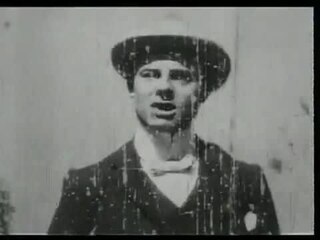
The Big Swallow is a 1901 British silent comic trick film, directed by James Williamson, featuring a man, irritated by the presence of a photographer, who solves his dilemma by swallowing him and his camera whole. The three-shot trick film is, according to Michael Brooke of BFI Screenonline, "one of the most important early British films in that it was one of the first to deliberately exploit the contrast between the eye of the camera and of the audience watching the final film".

Flying the Foam and Some Fancy Diving is a 1906 British silent comic trick film, directed by James Williamson, featuring a man diving from Brighton Pier while mounted on a bicycle, in both forward and reverse motion.

Our New Errand Boy is a 1905 British short silent comedy film, directed by James Williamson, about a new errand boy, engaged by a grocer who soon regrets the appointment. This "relatively unambitious" chase comedy, according to Michael Brooke of BFI Screenonline, "is one of a number of Williamson films featuring a mischievous child, played by the director's son Tom". "Although essentially a series of sketches", this film, according to David Fisher, "demonstrates the extent to which Williamson had developed film technique For a start, the film has a title frame, which includes the logo of the Williamson Cinematograph Company", and, "the chase section anticipates the American comedies of the next decade".

Attack on a China Mission is a 1900 British short silent drama film, directed by James Williamson, showing some sailors coming to the rescue of the wife of a missionary killed by Boxers. The four-shot film, according to Michael Brooke of BFI Screenonline, was innovative in content and technique. It incorporated a reverse-angle cut and at least two dozen performers, whereas most dramatic films of the era consisted of single-figure casts and very few shots. Film historian John Barnes claims Attack on a China Mission had "the most fully developed narrative" of any English film up to that time."

Stop Thief! is a 1901 British short silent drama film, directed by James Williamson, showing a tramp getting his comeuppance after stealing some meat from a butcher and his dogs. "One of the first true 'chase' films made not just in Britain but anywhere else", according to Michael Brooke of BFI Screenonline. It was released along with Fire! (1901), "indicating the direction Williamson would take over the next few years, as he refined this new film grammar to tell stories of unprecedented narrative and emotional sophistication."

The Waif and the Wizard, also entitled The Home Made Happy, is a 1901 British silent comic trick film, directed by Walter R. Booth, featuring a magician using his magic to aid an ailing girl at the request of her brother. The film, "is rather less elaborate in terms of special effects than the other films that W.R. Booth and R.W. Paul made the same year," but according to Michael Brooke of BFI Screenonline, "provides an excellent illustration of how effects used sparingly can often have more impact, especially when set in a suitable emotional context."

The Countryman and the Cinematograph is a 1901 British short silent comedy film, directed by Robert W. Paul, featuring a stereotypical yokel reacting to films projected onto a screen. The film "is one of the earliest known examples of a film within a film", where, according to Michael Brooke of BFI Screenonline, "the audience reaction to that film is as important a part of the drama as the content of the film itself".

The Extraordinary Waiter is a 1902 British silent comic trick film, directed by Walter R. Booth, featuring a brutish colonialist failing to destroy a blackfaced waiter. The film "makes for somewhat uncomfortable viewing," but according to Michael Brooke of BFI Screenonline, "it's just about possible to read this as a metaphor for the rather more widespread frustrations arising from British colonial rule, though it seems unlikely that this was intentional on Booth's part."
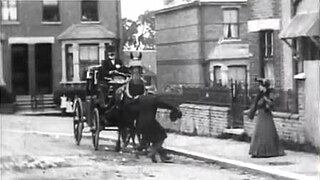
An Extraordinary Cab Accident is a 1903 British silent comic trick film, directed by Walter R. Booth, featuring a gentleman making a miraculous recovery after being trampled underfoot by a horse and cab. The film, "seems something of a step back," "compared with the elaborate special effects fantasies that director W.R. Booth and producer R.W. Paul had already concocted," but according to Michael Brooke of BFI Screenonline, "more complex special effects might well have worked against the impression Booth and Paul were clearly seeking to create, which is that of a man being genuinely run over by a horse-drawn cab, his body being knocked down and trampled by the horse's hooves."

Is Spiritualism a Fraud? is a 1906 British silent trick film directed by Walter R. Booth, featuring a medium exposed as a fake during a séance.

Willie's Magic Wand is a 1907 British silent comic trick film, directed by Walter R. Booth, featuring a young boy terrorising the household with his father's magic wand.
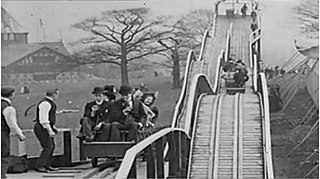
A Switchback Railway is an 1898 British short black-and-white silent actuality film, directed by Robert W. Paul, featuring patrons riding on a switchback railway at a fairground at Alexandra Palace, where Blandford Hall can be seen in the background. "This dynamically composed actuality," according to Michael Brooke of BFI Screenonline, "was clearly a success, so much so that James Williamson and the Riley Brothers released their own switchback railway films only a few months later." It is included on the BFI DVD R.W. Paul: The Collected Films 1895-1908. It is arguable that the filmmaker, R.W. Paul, missed a trick by not placing the camera inside one of the moving cars to simulate the ride from the passenger's perspective, although he might have had difficulty keeping the camera steady. Nonetheless, the film was clearly a success, so much so that James Williamson and the Riley Brothers released their own switchback railway films only a few months later.




















